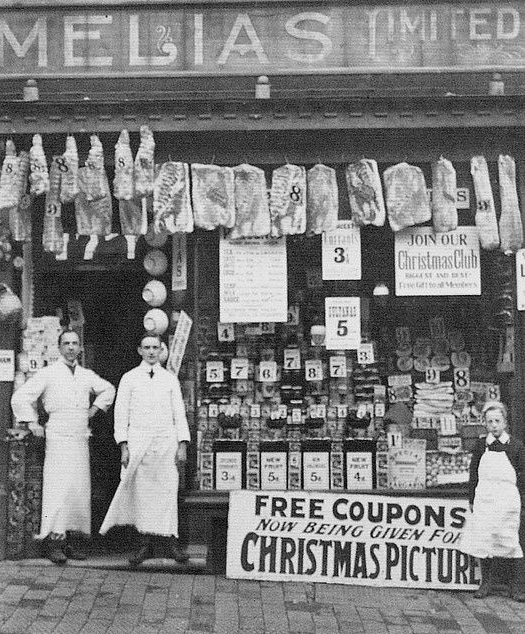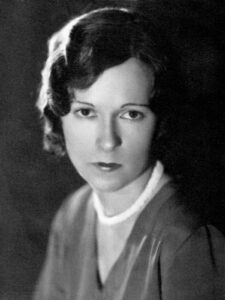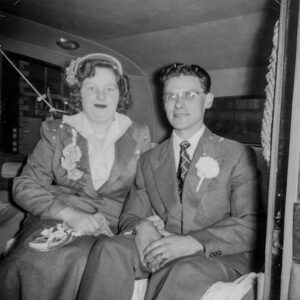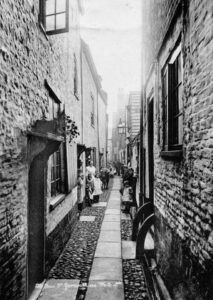Britain has often been branded ‘a nation of shopkeepers’. My ancestors ran several grocery shops from the mid-19th to the mid-20th century. This blog explores the pivotal role of these shops in their communities and how they were run and operated.
Before the Victorian era, most people shopped at local marketplaces for fresh food and other goods. Some markets operated daily, while others were held weekly or on specific days. Another option was provided by travelling vendors known as pedlars or hawkers, including street vendors who advertised their goods by calling out loudly, went door-to-door, and vendors or travelled from village to village.
The rise of grocery shops
The Victorian era saw the emergence of general grocery shops stocking a range of products. In the mid-19th century, these shops typically offered staple foods and household items such as flour, sugar, tea, coffee, dried fruits, spices, and soap. Many goods were sold in bulk, with customers often bringing their own containers to fill.
By the early 20th century, advances in food preservation, such as canning and refrigerated transport, had expanded the variety of products available. Grocers began to stock a wider array of canned and packaged foods, including meats, vegetables, and fruits. This period also saw the introduction of branded goods and an increase in imported products as the British Empire expanded.
The local shop became central to communities in both rural villages and urban neighbourhoods, serving as a hub for shopping and socialising.

The role of the owner and staff
Most shops were owned by men, although some were owned by widows of shop owners. Those shops run by women tended to be milliners, seamstresses and dressmakers. Stores began to expand in size and, with the installation of plate glass windows, became brighter along with window displays.
Shopkeeping was not an easy profession, for it required long hours of work, often from early morning to midnight, and profit margins were low, and income was uncertain. However, compared to working-class jobs in factories, foundries, and mines, shopkeeping offered comfort, security, independence, and status.
Shopkeepers needed to be highly knowledgeable about their stock and adept at managing their inventory to meet the seasonal needs of their customers. In family-run shops, all family members might contribute. Larger shops employed assistants who handled various tasks, from serving customers to managing stock.
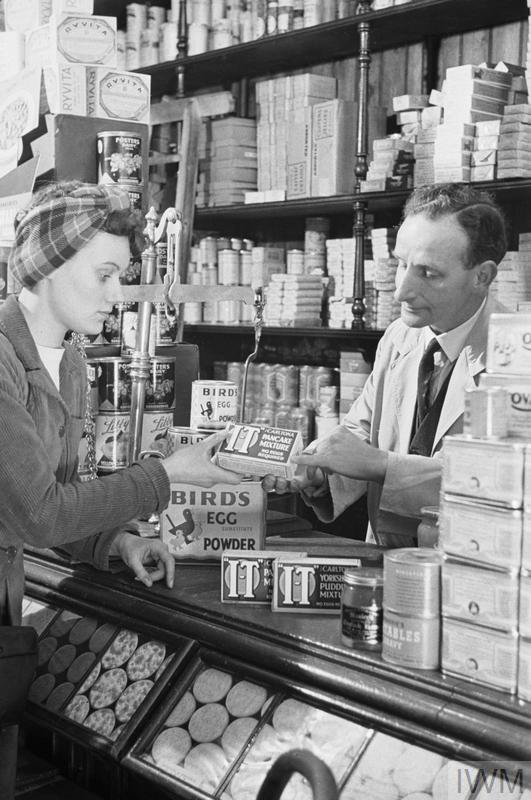
The evolution of shopping
Until the 1940s, grocery store customers would present their shopping lists to the shopkeeper, who would then gather the requested items. Goods were kept in drawers, cases, or behind the counter, out of customers’ reach. Most shops operated on a credit basis, with customers settling their accounts weekly or monthly.
During the Second World War, this system was strained as large numbers of women entered the workforce. With fewer staff available, the bureaucracy of rationing, and the constant threat of air raids, long queues became common.
It 1948 the country’s first permanent self-service store opened in London. Self-service was already common in the United States, and by enabling customers to select their own goods, shopkeepers needed fewer staff and could reduce prices. Initially, self-service was somewhat daunting and confusing to shoppers used to a personal relationship with their shopkeepers. However, customers quickly embraced the concept, and within a little more than a decade, self-service supermarkets were operating all over the country.

